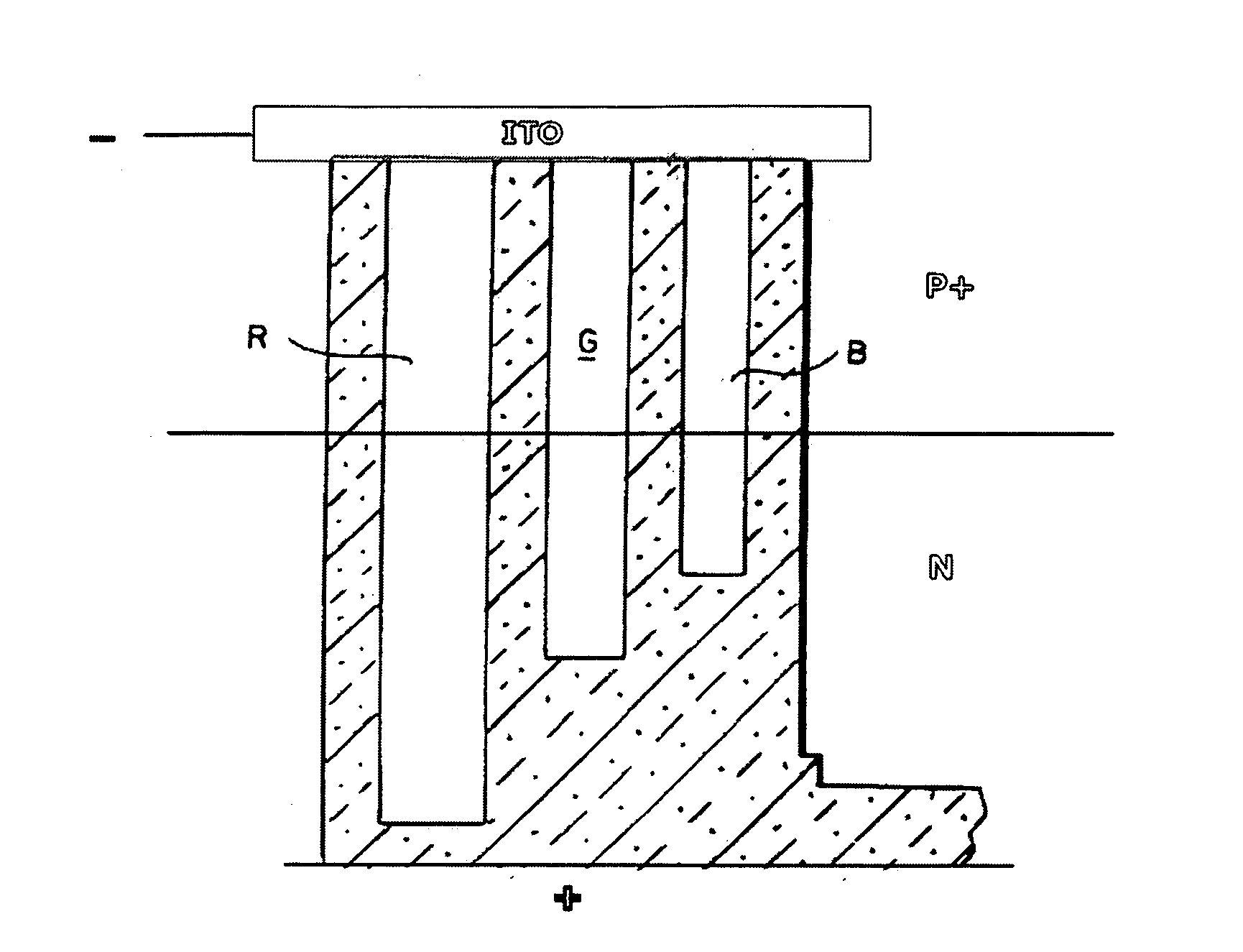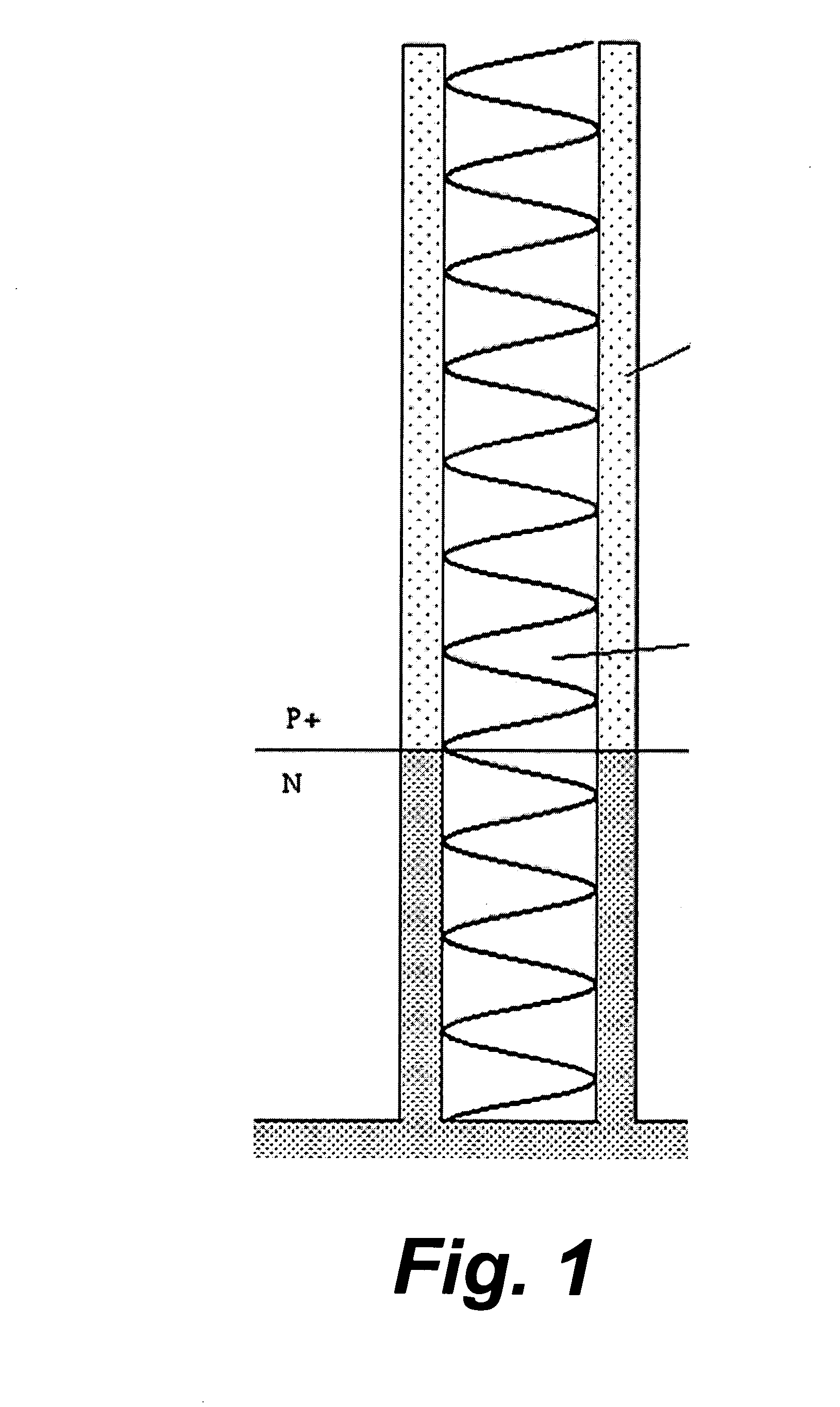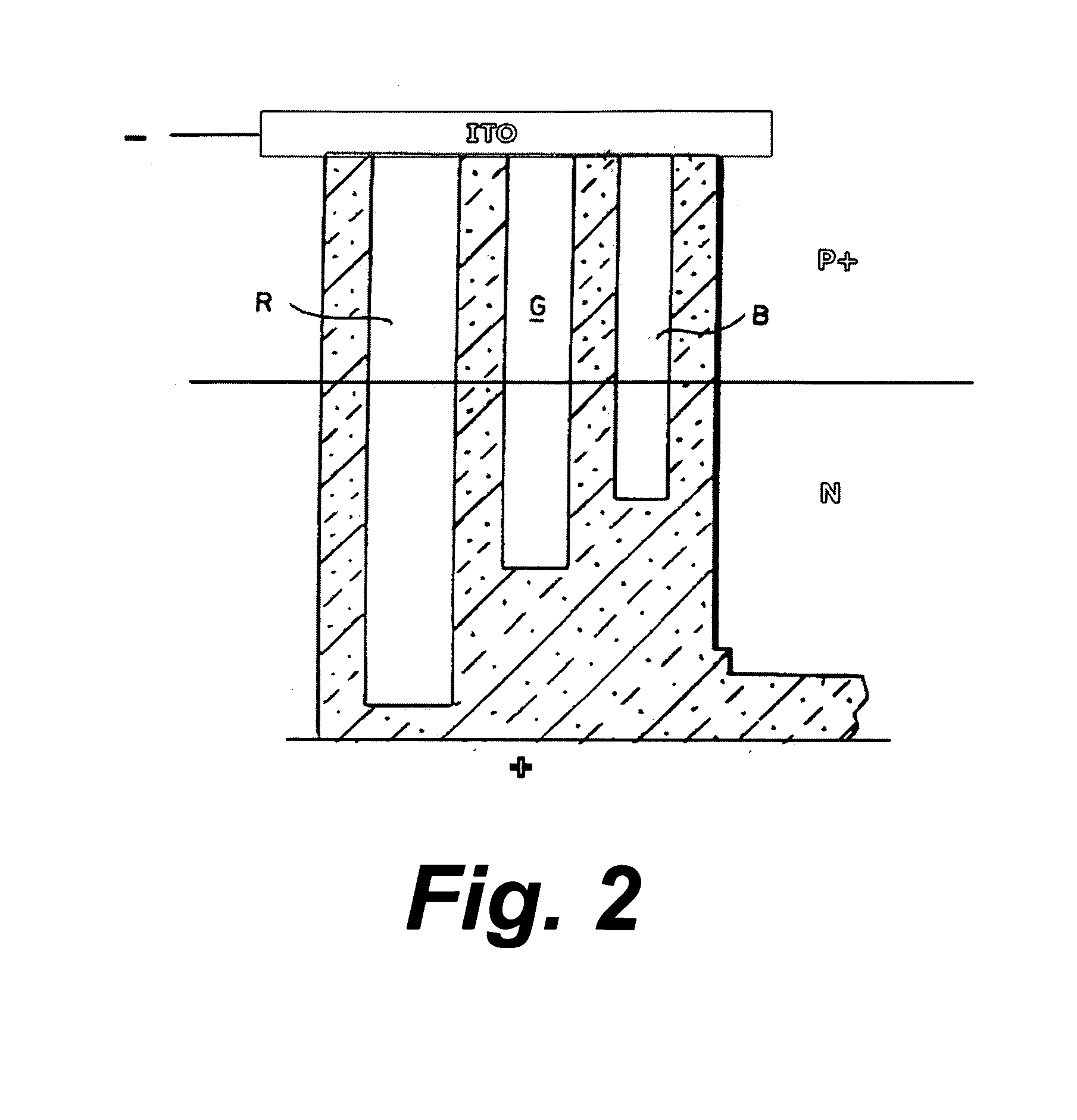Solar photovoltaic structure comprising quantized interaction sensitive nanocells
a nano-cell and photovoltaic technology, applied in the field of solar photovoltaic structure comprising quantized interaction sensitive nano-cells, can solve the problems of inability to meet the sensitivity level and the inability of u.s. pat. no. 4,445,050, and achieve the effects of increasing efficiency, high efficiency, and increasing solar cell efficiency
- Summary
- Abstract
- Description
- Claims
- Application Information
AI Technical Summary
Benefits of technology
Problems solved by technology
Method used
Image
Examples
Embodiment Construction
[0024]The present invention relates to a novel light to electrical power converting structure comprised of individual “nanocells”, each being defined as an energy converting structure comprising (1) A sub-micron dimensioned, “antenna” light interaction space or spaces wherein light is absorbed as the wave of classical physics, with this space or spaces being immediately adjacent to a fixed dimension quantum confined electron space or spaces (“EQC”) that forms the absorbing mass, and, (2) wherein each nanocell provides for separation of electrical charge (using, for example, a pn or Schottky barrier junction) contained within each nanocell. The single or fundamental nanocell can also be described as the basic “building block” of an overall solar cell array structure. In some embodiments of the present invention, each nanocell comprises a optical light wave-accepting region fabricated, for example, as a cavity on the surface of a semiconductor, which is intimately and directly bounded...
PUM
 Login to View More
Login to View More Abstract
Description
Claims
Application Information
 Login to View More
Login to View More - R&D
- Intellectual Property
- Life Sciences
- Materials
- Tech Scout
- Unparalleled Data Quality
- Higher Quality Content
- 60% Fewer Hallucinations
Browse by: Latest US Patents, China's latest patents, Technical Efficacy Thesaurus, Application Domain, Technology Topic, Popular Technical Reports.
© 2025 PatSnap. All rights reserved.Legal|Privacy policy|Modern Slavery Act Transparency Statement|Sitemap|About US| Contact US: help@patsnap.com



